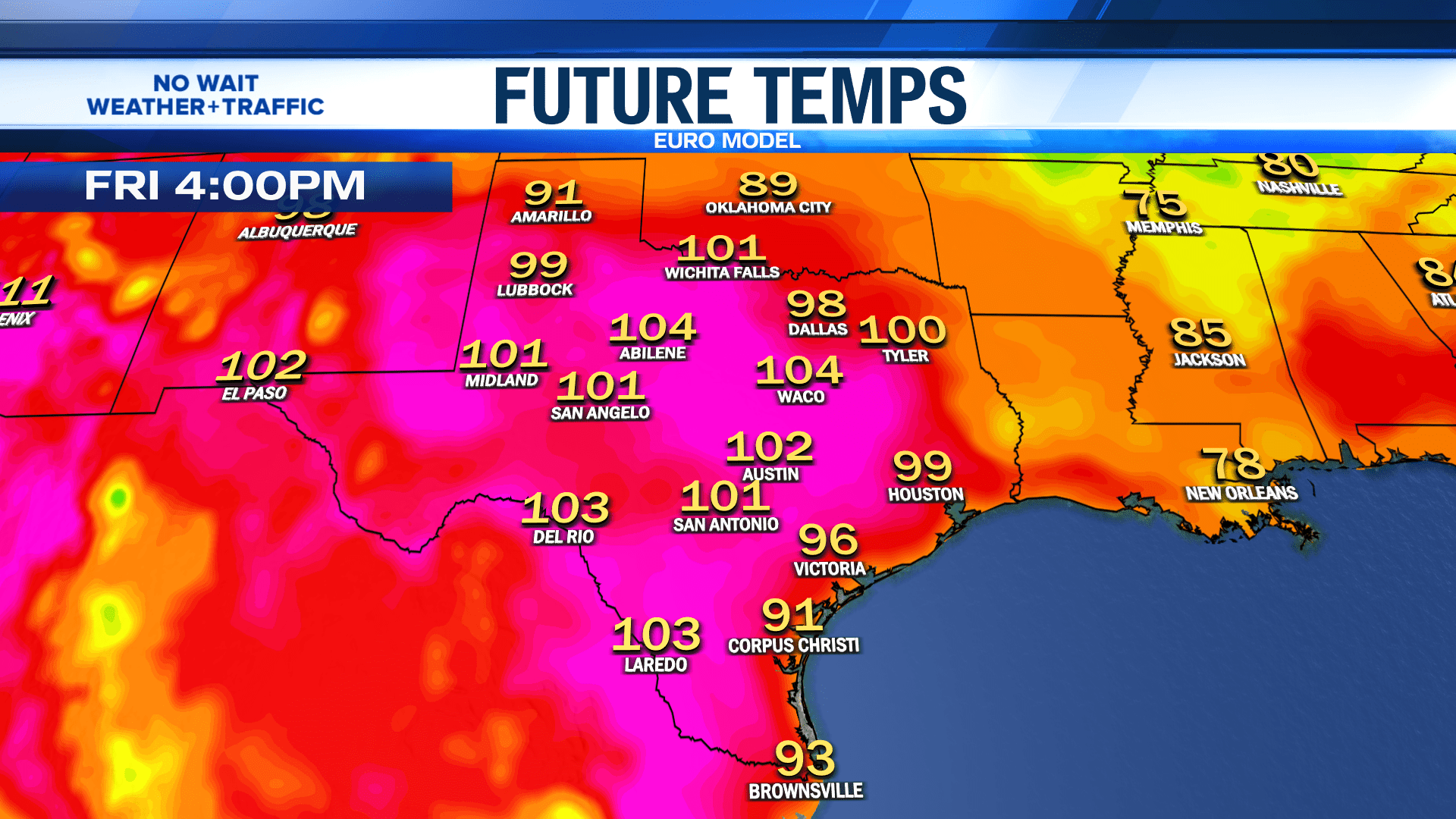Dangerous Heat: Texas Issues Warning For 111-Degree Temperatures

Table of Contents
Understanding the Dangers of Extreme Heat in Texas
Heat Stroke and Heat Exhaustion
Extreme heat in Texas can lead to serious health consequences, most notably heat stroke and heat exhaustion. Understanding the differences is vital for timely intervention.
-
Heat Stroke Symptoms: High body temperature (above 103°F), confusion, seizures, loss of consciousness, rapid breathing, and strong pulse. Heat stroke is a medical emergency requiring immediate attention.
-
Heat Exhaustion Symptoms: Heavy sweating, weakness, dizziness, headache, nausea, and muscle cramps. While less severe than heat stroke, heat exhaustion is a warning sign and should be treated promptly.
-
First Aid: For heat exhaustion, move the person to a cool place, remove excess clothing, and offer cool water. For heat stroke, call 911 immediately and begin cooling measures as instructed by emergency personnel. Do not give the person anything to drink if they are unconscious.
Vulnerable Populations
Certain groups are more susceptible to the dangers of a Texas heatwave:
-
Elderly Individuals: Their bodies may not regulate temperature as effectively, making them more prone to heat-related illnesses. Regular check-ins on elderly neighbors are crucial.
-
Children: Children's bodies overheat faster than adults'. Never leave children unattended in vehicles, even for short periods, during hot weather.
-
Individuals with Pre-existing Conditions: People with heart disease, respiratory illnesses, or chronic conditions are at increased risk.
-
Precautions: These vulnerable populations should:
- Limit strenuous outdoor activities during peak heat hours.
- Stay hydrated by drinking plenty of water throughout the day.
- Wear light-colored, loose-fitting clothing.
- Seek air-conditioned spaces frequently.
Impact on Infrastructure
The extreme heat places a significant strain on Texas's infrastructure:
-
Power Grids: High energy demand from air conditioning can overload power grids, leading to potential blackouts.
-
Water Systems: Increased water usage for cooling and hydration can stress water resources.
-
Transportation: Extreme heat can cause roads to buckle and affect transportation systems.
-
Energy Conservation Tips:
- Set your thermostat higher (ideally to 78°F or higher when you're away).
- Use fans strategically to circulate air.
- Close blinds and curtains during the hottest parts of the day to keep the sun's rays out.
- Unplug electronics and appliances not in use.
Safety Tips for Surviving the Texas Heatwave
Staying Hydrated
Hydration is paramount during extreme heat. Drink plenty of water, even before you feel thirsty.
- Water Intake: Aim for at least eight glasses of water per day, and more if you are actively sweating.
- Avoid Sugary Drinks: Sugary drinks can dehydrate you further. Stick to water, electrolyte drinks, or unsweetened tea.
- Signs of Dehydration: Dizziness, headache, dry mouth, and decreased urine output.
Limiting Outdoor Activity
Schedule outdoor activities for the cooler parts of the day, early morning or late evening.
- Sun Protection: Wear light-colored, loose-fitting clothing, a wide-brimmed hat, and sunglasses.
- Sunscreen: Apply a broad-spectrum sunscreen with an SPF of 30 or higher.
Seeking Shade and Cooling Centers
Find shade whenever possible and utilize cooling centers offered by your community.
- Public Libraries: Often open and provide a cool refuge during heatwaves.
- Community Centers: Check your local government website for locations.
- Shopping Malls: Air-conditioned spaces can offer temporary relief.
Proper Use of Air Conditioning
Ensure your air conditioning unit is functioning properly.
- Regular Maintenance: Regular maintenance helps prevent breakdowns.
- Identify Problems: Address any issues promptly to avoid complete failure.
- Effective Fan Usage: Utilize fans to improve air circulation and reduce reliance on AC alone.
Official Warnings and Resources
Stay informed about the Texas heatwave through official channels:
- Texas Government Alerts: [Insert Link to Texas Government Website]
- National Weather Service Forecasts: [Insert Link to NWS Website]
- Emergency Services Contact Information: 911
Conclusion
This dangerous heatwave affecting Texas demands vigilance. Understanding the dangers of extreme heat, taking preventative measures, and staying informed are crucial for surviving these 111-degree temperatures. By following these heat safety tips and utilizing available resources, you can protect yourself and your community during this Texas heatwave. Remember to check for updates on the Texas heatwave frequently and prioritize your safety. Stay safe and stay cool!

Featured Posts
-
 Is Live Now Pay Later Right For You A Comprehensive Review
May 30, 2025
Is Live Now Pay Later Right For You A Comprehensive Review
May 30, 2025 -
 Awstabynkw Ttqdm Bthbat Me Tsaed Wtyrt Mwsm Almlaeb Altrabyt
May 30, 2025
Awstabynkw Ttqdm Bthbat Me Tsaed Wtyrt Mwsm Almlaeb Altrabyt
May 30, 2025 -
 Alebth Baljghrafya Alflstynyt 13 Hya Flstynya Fy Mwajht Mkhttat Astytanyt Jdydt
May 30, 2025
Alebth Baljghrafya Alflstynyt 13 Hya Flstynya Fy Mwajht Mkhttat Astytanyt Jdydt
May 30, 2025 -
 Kawasaki Z H2 Alasan Di Balik Ketidakhadirannya Di Pasar Indonesia
May 30, 2025
Kawasaki Z H2 Alasan Di Balik Ketidakhadirannya Di Pasar Indonesia
May 30, 2025 -
 Twins Arrival Reignites Amber Heard And Elon Musks Embryo Dispute
May 30, 2025
Twins Arrival Reignites Amber Heard And Elon Musks Embryo Dispute
May 30, 2025
